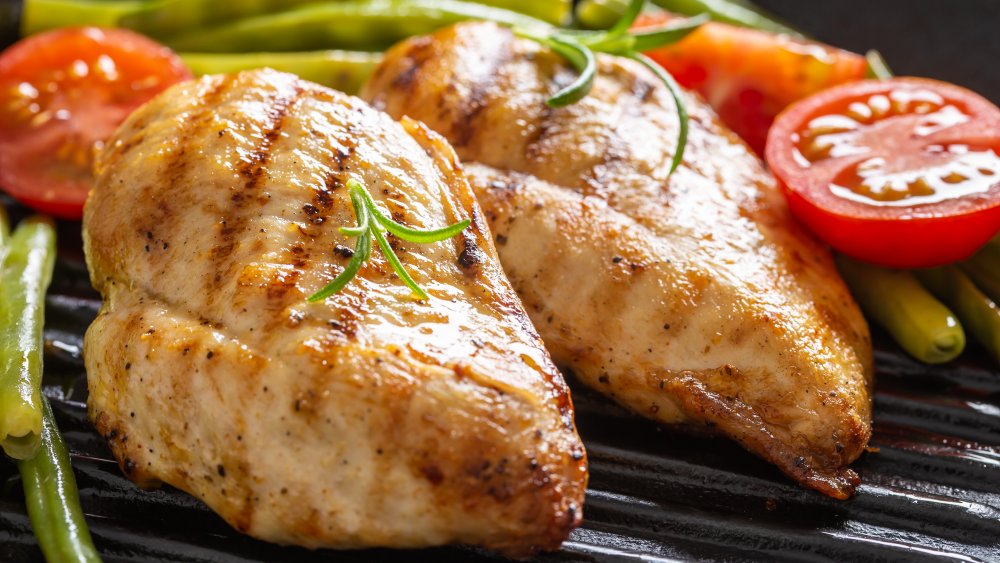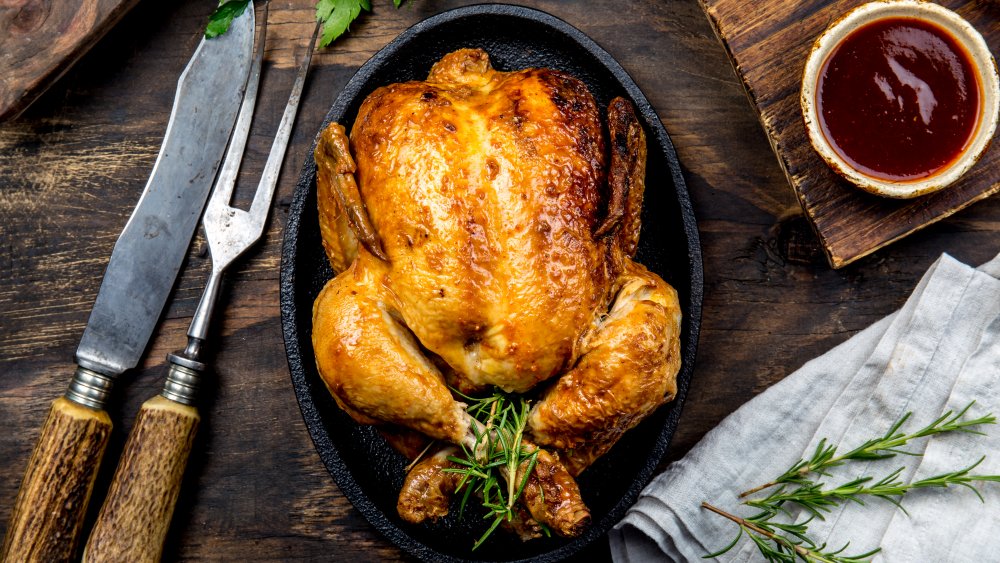The Real Reason Boneless Chicken Breasts Are So Expensive
Anyone who has gone to the shops to buy a chicken breast has realized that, in terms of bang for buck, it fails to deliver. This is especially true when you consider the data given by The Kitchn. In 2017, a chicken breast cost $3.33 while the whole chicken, breast meat included, averaged $0.94 per pound. It should be noted that another article from The Kitchn adjusts the price to account for how much of the product you can actually eat, which results in chicken breasts being worth $2.96 and the whole body being worth $1.65 — still a vast difference.
Obviously, since the whole chicken includes the breast, it will weigh more than three pounds, marking its price as more expensive than the breast. However, if we look at a USDA handout for chicken, we see most chicken weighs at 2 ½ pounds to 4 ½ pounds with the heaviest listed, the capon, coming in at 7 pounds, which would cost $6.93. Considering how much more meat you get for the money spent, simply buying the chicken whole turkey is the more economical option.
But hang on, we should figure out why it's cheaper to buy a whole chicken than its severed breast. In a piece examining the pros and cons of chicken breasts vs chicken thighs, Wide Open Eats states that in the United States, chicken breasts are vastly more popular, meaning suppliers will charge more for the breast with the confidence that consumers will buy the breast anyway.
Being abreast about your chicken breasts
What the discussion of a chicken breast's cost occludes, however, is the fact that there's the rest of the chicken. The breast doesn't come into being as a bobbing slab of meat. As Sophia Hampton, a whole-animal butcher, laments in Bon Appetit, a recipe calling for two breasts and five chicken thighs requires three whole chickens which come with whole sections of meat that are left unused.
In the piece, Hampton skates over the history of how chicken cuts didn't exist until the 20th century. when Cecile Steele accidentally ordered 500 chicks instead of 50 and resorted to selling their meat to save cost, which created broiler chickens. Then, in the sixties, the government began regulating the quality of broilers, so the processors began selling chicken parts as a workaround.
Still, most families in the United States chose to buy the breast as a source for protein. Though, as The Guardian notes, our consumption of protein exceeds the amount required. Modi Mwatsama, director of global health at the UK Health Forum, marveled over how "Increasingly, we are seeing foods labelled as a source of protein, as if we should consider that to be a good thing. Yet for the last 20 years or more, people have not been deficient in protein in the developed world." Furthermore, there's the environmental cost of raising chickens we don't even fully consume. Between all of this, buying only the chicken breast is a needlessly expensive enterprise.

